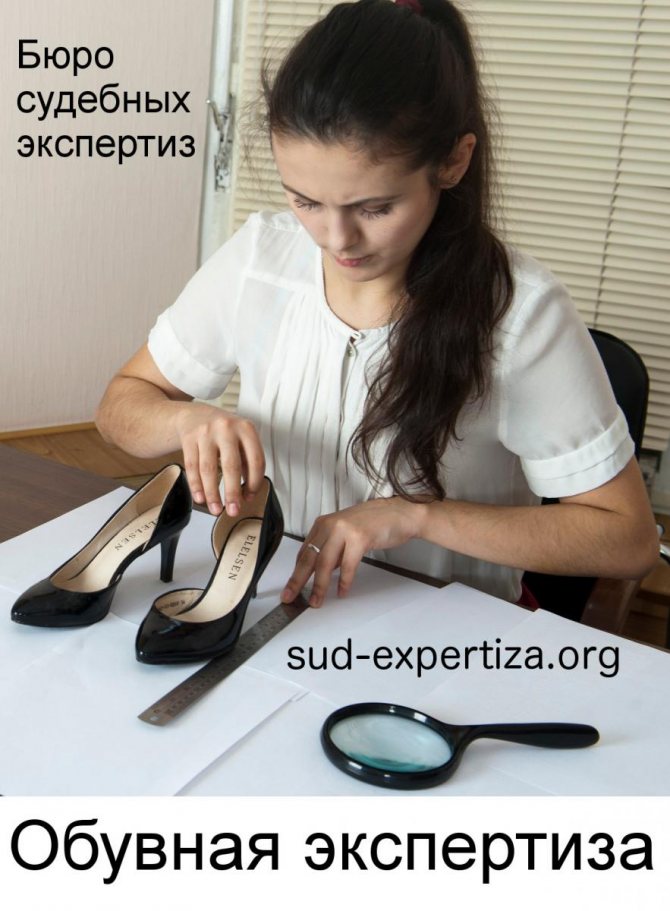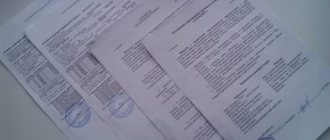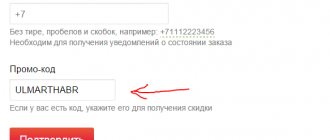Defects in parts of the upper and lining of shoes and their fastenings
The most common operational defects of shoe uppers and their fastenings include:
♦ wear of individual sections of the vamps and heels (or the heel section of the boots and boots);
♦ rupture of vamps along the protracted edge;
♦ wear of the lining in the heel and toe areas;
♦ tearing of the upper edge of the shoe blanks;
♦ deformation of the upper of the shoe with the formation of rough folds on the vamps;
♦ contamination of the uppers of shoes (especially light-colored and white ones, as well as those with velor and suede uppers);
♦ violation (shedding) of the coating on the leather of the shoe upper;
♦ rupture of straps in strap-type shoes, as well as buckle belts; loss of applied decorations, blocks and hooks;
♦ damage to zippers; violation of the seams connecting the outer parts of the upper of the shoe, the lining parts with each other and the outer parts with the lining (especially the stitching seams connecting the half-vamps and half-shafts in boots along the front edge, fastening seams, piping stitches in the heel, seams connecting the upper parts with tight-fitting stitched-adhesive shoes).
What is considered a defect in shoes?
Shoe markings must contain information about the size, model and (or) article number of the product, the material of the upper, lining and sole, conditions of use and care of the shoes.
That is, the seller is obliged to convey to the consumer information about the operating conditions and rules for caring for shoes, and the consumer must familiarize himself with this information and follow the recommendations in order for the shoes to last longer, maintain consumer properties and have a presentable appearance.
1. The most common defects of winter shoes (read more...)
Defects in shoe bottom parts
Wear of the soles, outsoles, heels or heels of shoes is manifested in a decrease in their thickness. Wear in this case comes down mainly to the sequential mechanical destruction of the surface layers due to the relative movement of the soles, outsoles, heels or heels along the supporting surface.
Rice. 9. Topography of wear of leather soles (areas of greatest wear are shaded)
The amount of wear, other things being equal, is directly proportional to the value of the specific pressure. Different parts of the plantar surface perceive pressure to different degrees, which leads to an uneven distribution of wear on the area of the soles, outsoles, heels or heels. In soles and outsoles, the zone of maximum wear is concentrated in the toe part (Fig. 9), in heels and heels - in the back part with a slope to the outer side (Fig. 10).
Rice. 10. Topography of wear of rubber heels and the bottom of the heels (areas of greatest wear are shaded): 1 - 96.8% of wear cases; 2 - 2.2% of wear cases; 3-1% wear cases
During the initial period of wear, heels wear out much more intensively than in subsequent periods (Fig. 11): during the first 10 days of wear, the thickness of the rubber heels of men's shoes at the rear edge decreases by approximately 35%, in the next 10 days by approximately 20%, and finally, over the next 10 days by about 10%. In shoes with leather soles, outsoles and heels, uneven wear is more pronounced than in shoes with rubber parts on the bottom.
Rice. 11. Curve of wear of rubber heels (at the rear edge) depending on the duration of shoe wear
A peculiarity of the wear of rubber porous soles is the chipping of the edges in the toe part due to systematic impacts of the front edge of the sole on the uneven supporting surface when walking. Sometimes there is also a fracture of the soles in the beam part along the bending line of the shoes, associated with unsatisfactory resistance to repeated bending of the sole materials.
The main form of wear on leather shoe insoles is the formation of surface cracks of varying depths in them, which turn into through cracks and fractures during prolonged wear of the shoes. The wear of artificial leather insoles such as cardboard, depending on their quality, manifests itself in delamination and rolling (abrasion), the formation of irregularities, folds and sometimes fractures.
Typical forms of wear on shoe heels include bending and subsidence, softening (in heels made of artificial materials) and abrasion on the side in contact with the foot.
Heels (with the exception of rubber ones) are generally not subject to direct wear. In many cases, thin heels (if the heels are improperly designed or materials with unsatisfactory mechanical properties are used for their manufacture) are subject to fracture. Quite often, during wear, regardless of the wear of the heels, the heels of medium and high heels wear out, the front surface of the leather heels is torn off, and the lower part of the heels wears out (with intensive wear of the heels and the adjacent surface of the heels).
The rate and nature of wear of the lower parts depend on many factors: the properties of the materials of the lower parts, the gender and age of the persons using the shoes, individual gait characteristics, designs of the lower parts, shoes in general, etc.
Results of an independent examination of shoes: who can you trust?
2. Manufacturing defects in shoes Experiments, as a rule, are carried out with the aim of simulating the actions of the consumer during use, in order to make it possible to observe the behavior of shoes in different situations that provoke the appearance of defects.
- In Art. 25 of the RFP states that the consumer has the right to return a quality product within 14 days from the date of purchase (7 days if the product was purchased in an online store).
- In Art. 21 of the RFP talks about the possibility of replacing shoes of inadequate quality.
- And Government Decree No. 55 of 1998 does not include shoes. Thus, it does not act as a product that could not be exchanged or returned.
How to write a complaint?
In any situation, the buyer retains the right to demand from the seller:
If the fact of the presence of defects in the shoes after a short wear is recognized by the seller, he undertakes to carry out repair measures within 10 days. If the seller or manufacturer does not agree with the claim materials, an examination is carried out. According to the Law on the Protection of Consumer Rights (clause 5 of Article 18), the seller or the person who produced the goods undertakes to accept footwear products for examination even if the buyer does not have a receipt document.
RIGHT OF RETURN
In winter, the most popular products submitted for examination are fur coats and shoes. Consumers bring items that they are almost 100 percent sure are defective. Meanwhile, according to experts, a significant number of buyers are mistaken. In their opinion, a false assessment of the causes of defects in goods lies in the difference between two concepts - “manufacturing defect” and “defect due to the fault of the manufacturer.” The quality of goods is regulated by the country's legislative acts, standards, regulatory and technical documentation of the enterprise where this or that product is produced. Any non-compliance with this standard - GOST - is considered a defect or manufacturing defect.
For example, the standard for fur products is regulated by the following points:
— longitudinal and transverse seams should not be skewed;
— skins are selected according to shade, shine, and hair height;
— inserts in the product must strictly correspond to the quality and color of the main skins;
— the lining should be in harmony in color and quality with the fur top;
- fur products made from dyed skins should not stain clothes;
- the leather fabric of fur skins must be soft, elastic, “non-rattling”, without grease stains;
— the coating should not crack or crumble when subjected to repeated bending;
- seams must be made with strong threads matching the color of the leather fabric without catching hair, gaps or cuts.
Shoes have their own evaluation parameters:
— absence of through damage to parts, cracking, peeling and stickiness of the coating film of the upper and lining material;
— shoe parts must be correctly positioned, the seams are well connected;
— the sole is well-glued;
- the heel must be placed correctly;
— the leather must have a stable coating and be free from cuts, sprains, and abrasions;
— the lining is well glued and sewn.
What is considered marriage and what is not?
Change in fur color is not a defect. Fur changes color over time; this is a natural process for which the seller is not responsible. Sometimes a new fur coat starts to have fur coming out along the seam (the so-called “trimming” - hairs damaged when cutting the skins). If this is due to pruning, then over time they will stop coming out, and this case does not apply to marriage. If there are no fewer of them and the fur is constantly coming out of the fur coat, then the reason is poor-quality dressing of the skins - this is a defect. Low-quality fur becomes noticeable already during the first season of wearing a fur coat. If the fur begins to come out in the second year, most likely the fur coat is not stored correctly. If a fur coat stains clothes and hands, this is a defect, it must be returned or exchanged for another that does not stain. The paint will not fix over time, and the fur coat will be painted constantly.
When under the lining there were holes in the leather fabric and protruding fur in the seams - these were traces of nails or staples, with the help of which the skin was straightened. In these cases, this is part of the technology of sewing a fur coat, and not signs of defects. The same can be said about the hairs that stick out from the seams. When two skins are sewn together along the edge, some of the hairs end up inside the fur coat; this is also not a defect. The fur has rolled up, the lining has come off, the fur has torn at the seam or nearby, and the fur coat is only one or two years old - this is definitely a defect, and there is a reason to return the fur coat under warranty. For example, a high-quality mink coat should be worn for at least 5-8 seasons. For shoes, the following are considered defective: a defect in the shoe upper, insole and sole, as well as shedding of dye, destruction of seams, splitting, fracture and tearing of the heel, subsidence of the heel.
Izhevsk experts examine fur coats and boots for defects in accordance with the specified parameters. The functions of the Committee for the Protection of Consumer Rights, which was abolished two years ago in Izhevsk, have today migrated to Rospotrebnadzor UR. Now it is within the competence of this department to provide consultations to citizens on issues of consumer protection. But consultation is not the only thing a buyer of a low-quality product can count on. In addition to guidance for action, Rospotrebnadzor specialists must help file claims when it is necessary to defend the return of money for a defective product in court. But not more. All related procedures are paid, as a rule, at the expense of the consumer or seller, if the warranty period of the product has not come to an end. Product examination can be carried out in several specialized organizations in Izhevsk. On average, experts charge from 400 to 1000 rubles for the service. The evaluation of a product, be it shoes or a fur coat, is carried out exclusively “by eye”. As they explained to me at the Chamber of Commerce and Industry, in the republic almost none of the institutions of this type have either the equipment or reagents to conduct a complete and objective analysis of products. The examination itself lasts about 40 minutes. Experts work with consumers by appointment. An order form is drawn up on site, on the basis of which the expert examines the existing defects. Upon completion of the inspection, a conclusion must be issued that can be used when returning the goods. Experts also help prepare all the necessary documents for the court if the legal return of funds has not been made.
When, in the process of preparing this material, I talked with experts from the Chamber of Commerce and Industry, they explained to me that the fur from which my fur coat was made did not correspond to what was declared. Instead of the supposed beaver, my fur coat turned out to be from a much cheaper rabbit. But this is only an oral statement, which can be confirmed after laboratory testing. It can be held in Izhevsk in several private organizations, but for decent money. On average, a laboratory test of a fur coat costs 3,500 rubles (+ interest is added to the cost of the product). If the product costs more than 20 thousand rubles, experts will ask for an additional 20 percent of the total cost. It is doubtful that under such conditions there will be many people willing to use this service, because you can spend more than 4,000 rubles and receive a written conclusion that the previous expert made a false statement and the fur coat is, after all, made of beaver.
How and within what time frames are returns and replacements made?
If the purchased product does not suit you for any reason, in accordance with Art. 25 of the Law of the Russian Federation “On the Protection of Consumer Rights” provides for the consumer’s right to exchange goods within 14 days. In this case, the goods must not be in use; their presentation, factory labels, as well as sales and cash receipts must be preserved. If you were unable to receive the desired product for exchange, the seller is obliged to return the money spent on its purchase to you.
In the event that a manufacturing defect is discovered during wear, the consumer is protected by Art. 18 of the Law of the Russian Federation “On the Protection of Consumer Rights”. According to this provision of the law, the buyer must file a claim against the store in 2 copies and present one of five demands:
— free elimination of product defects;
— proportionate reduction in the purchase price;
— replacement with a product of a similar model or article;
— replacement with the same product of a different brand or model with recalculation of the purchase price;
— termination of the purchase and sale agreement.
If the consumer discovers defects in the product and submits a request for its replacement, the seller is obliged to replace such product within seven days. If the seller does not have the goods necessary for replacement at the time of submitting the demand, the replacement must be carried out within a month or a refund must be made.
According to Art. 18 of the Law “On the Protection of Consumer Rights”, the buyer of a product that has become unusable has the right to return the purchase of inadequate quality even after the expiration of the warranty period. If significant defects in a product are identified, the consumer has the right to make a demand to the manufacturer to eliminate such defects free of charge if he proves that they arose before the transfer of the product to the consumer or for reasons that arose before that moment. Such a claim can be made within two years from the date of purchase of the goods. If this requirement is not satisfied within twenty days, the consumer has the right to demand a refund of the amount paid. Your absence of a cash receipt or sales receipt or other document certifying the fact and conditions of purchase of the goods is not grounds for refusal to satisfy your claims during the warranty period. But if the warranty period has expired, then if the receipt is lost, the consumer must provide other evidence that the product was purchased in this particular place. If a sheepskin coat or fur coat is damaged (or lost) in a dry cleaner, the consumer is required to pay compensation - twice the cost of the product. If they cleaned it poorly, they must redo it.
The main stages of carrying out a commodity examination of footwear
| Forensic commodity examination | Extrajudicial examination |
|
|

A distinctive feature of the forensic merchandising examination of footwear from the extrajudicial independent examination of footwear is the appointment and conduct of a forensic examination in strict accordance with the current procedural legislation of the Russian Federation. A forensic merchandising examination is carried out on the basis of a court ruling or a resolution of an investigator (inquiry officer) to appoint a merchandising examination.
All case materials and objects under investigation for conducting a forensic commodity examination are obtained in court by our employee or an employee of the Federal State Unitary Enterprise “Spetsvyaz” and are delivered in sealed form to our expert institution, after which they are opened in the presence of the parties or their representatives.
The parties to the case can become familiar with the results of the forensic examination only in court. The expert’s conclusion on conducting a forensic commodity (commodity) examination, together with the case materials received in court, is returned to the court by our employee or an employee of the Federal State Unitary Enterprise “Spetsvyaz”, which significantly reduces the period of the examination.
What is considered a defect in shoes?
It is important to attach the necessary supporting papers to this document. These include checks, tags, and other documents. A corresponding note is created about this. It is necessary to create a duplicate of the documentation so that the seller signs the acceptance on the second sample. Alternatively, you can photocopy the original.
If the buyer fulfills all these conditions, the seller has no right to refuse him. It is important that the defects reported by the consumer were the seller's fault in order to qualify for repairs, replacements, or refunds. If the examination proves that the defects appeared during the unfair use of the shoes, then the consumer will not only receive nothing, but will also pay for the examination.
Buyer's rights (read more...)










